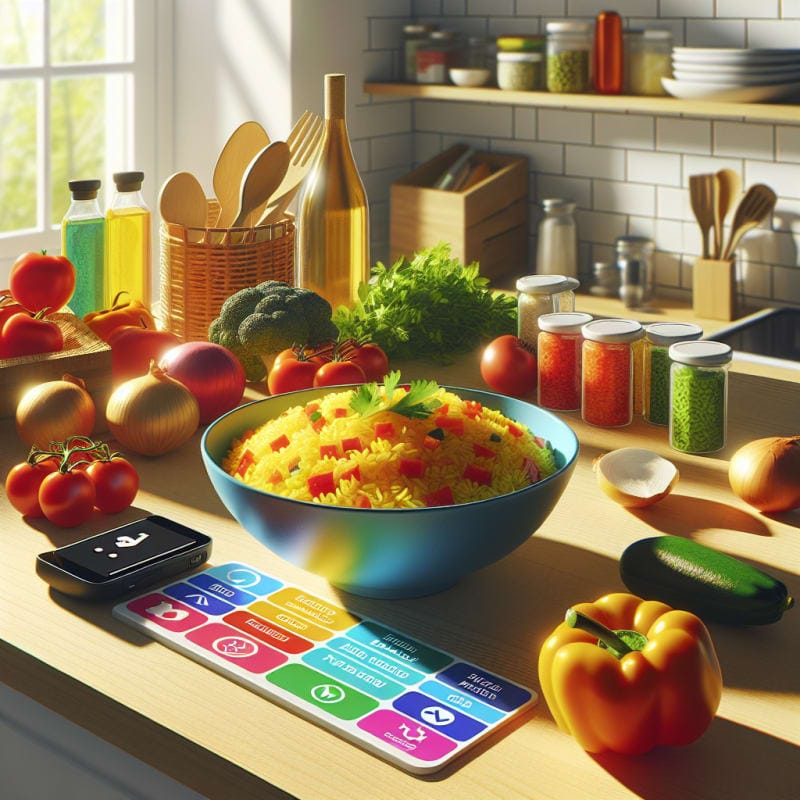Rice a Roni Spanish Rice: Food Scan Genius Analysis
Rice a Roni Spanish Rice has become a staple in many American households, promising convenience and flavor in one box. Yet, as consumers become increasingly health-conscious and aware of food sensitivities, the scrutiny of packaged foods intensifies. This article provides a comprehensive analysis of Rice a Roni Spanish Rice, integrating scientific research, current news, and the latest technology for ingredient transparency—namely, the Food Scan Genius app. Our goal: to empower readers to make informed decisions about what they eat, especially when dietary preferences or sensitivities are at stake.
Understanding Rice a Roni Spanish Rice: Ingredients and Nutrition
Rice a Roni Spanish Rice is marketed as a quick, flavorful side dish. Its ingredient list typically includes:
- Rice
- Pasta (often vermicelli)
- Tomato powder
- Onion powder
- Garlic powder
- Spices (including paprika and chili pepper)
- Salt
- Vegetable oil
- Yeast extract
- Natural flavors
According to the FDA’s Nutrition Facts Label guidelines, consumers should pay close attention to sodium, fat, and carbohydrate content when evaluating packaged foods. The nutritional profile of Rice a Roni Spanish Rice per serving (about 1 cup prepared) is typically:
| Nutrient | Amount per Serving | % Daily Value* |
|---|---|---|
| Calories | 190 | 10% |
| Total Fat | 1g | 1% |
| Sodium | 700mg | 30% |
| Total Carbohydrate | 40g | 15% |
| Protein | 4g | 8% |
*Percent Daily Values are based on a 2,000 calorie diet.
Key Health Considerations: Sodium, Additives, and Allergens
Packaged foods like Rice a Roni Spanish Rice often contain high levels of sodium and flavor enhancers. The National Institutes of Health (NIH) notes that excessive sodium intake is linked to hypertension and increased risk of cardiovascular disease. The sodium content in one serving of Rice a Roni Spanish Rice approaches one-third of the recommended daily limit for adults.
Additionally, the presence of yeast extract and “natural flavors” can be problematic for individuals with food sensitivities. According to the European Food Safety Authority (EFSA), flavorings are generally safe but can trigger reactions in sensitive individuals. The ambiguity of “natural flavors” means they could be derived from animal, plant, or synthetic sources, posing a risk for those with allergies or dietary restrictions.
Allergen Watch: Gluten and Dairy
Rice a Roni Spanish Rice contains pasta, which is typically made from wheat flour. This makes it unsuitable for those with celiac disease or gluten intolerance. While the product does not list dairy as an ingredient, cross-contamination in manufacturing facilities is a risk, as highlighted in recent New York Times coverage on allergen labeling.
Food Scan Genius: Empowering Ingredient Transparency
In an era of increasing dietary complexity, technology offers powerful tools for consumers. Food Scan Genius is an app designed to decode ingredient lists, flag potential allergens, and match foods to individual dietary profiles. By scanning the barcode of Rice a Roni Spanish Rice, users receive instant feedback on:
- Gluten content
- Sodium level warnings
- Presence of artificial additives
- Suitability for vegan, vegetarian, or other dietary patterns
This personalized approach is especially valuable for families managing allergies or chronic conditions. As reported in Forbes Tech Council (2024), AI-driven apps like Food Scan Genius are revolutionizing how consumers interact with food labels, making ingredient transparency accessible and actionable.
User Testimonial: Food Scan Genius in Action
“As someone with gluten sensitivity and a heart condition, I used to spend ages reading ingredient lists. Food Scan Genius changed everything—I scan, and I know instantly if a product like Rice a Roni Spanish Rice is safe for me. Highly recommend it to anyone with dietary needs!”
Download Food Scan Genius
Scientific Perspective: Processed Foods and Public Health
The consumption of processed foods is a subject of ongoing scientific debate. According to a 2020 PubMed review, diets high in ultra-processed foods are associated with increased risks of obesity, diabetes, and metabolic syndrome. Rice a Roni Spanish Rice, while convenient, falls into the “processed” category due to its refined grains, added flavorings, and preservatives.
Nonetheless, the FDA and EFSA maintain that packaged foods are safe when consumed in moderation and within dietary guidelines. The challenge lies in balancing convenience with nutritional quality—a dilemma faced by millions daily.
Q&A: Rice a Roni Spanish Rice—What You Need to Know
Is Rice a Roni Spanish Rice healthy?
Rice a Roni Spanish Rice offers a quick source of carbohydrates and some protein, but its high sodium content and processed ingredients mean it should be enjoyed in moderation. For those with specific dietary needs, ingredient transparency is crucial.
Does Rice a Roni Spanish Rice contain gluten?
Yes, the pasta component is made from wheat, rendering the product unsuitable for gluten-free diets.
Can Food Scan Genius help with food sensitivities?
Absolutely. Food Scan Genius scans barcodes and analyzes ingredient lists, flagging potential allergens and dietary conflicts instantly.
Are there healthier alternatives to Rice a Roni Spanish Rice?
Whole grain rice, quinoa, or homemade Spanish rice with fresh ingredients are healthier alternatives, offering lower sodium and fewer additives.
Current News: The Evolving Landscape of Food Labeling
Recent news highlights the growing demand for clearer food labeling. The CNN Health article from April 2024 reports that consumers are increasingly frustrated by ambiguous ingredient lists and allergen warnings. Regulatory agencies are responding by proposing stricter labeling standards, a move welcomed by advocacy groups.
Meanwhile, the integration of AI-powered apps like Food Scan Genius is cited in Wall Street Journal (2024) as a “game changer” for those managing food allergies and chronic conditions.
Broader Implications: Ingredient Transparency and Consumer Health
The analysis of Rice a Roni Spanish Rice is emblematic of a larger issue—how can consumers navigate the complex world of food ingredients in a landscape crowded with processed options? The stakes are high, especially for those with allergies, chronic diseases, or ethical dietary preferences.
Technology, regulation, and consumer education must converge to ensure safe, informed choices. Apps like Food Scan Genius, combined with robust scientific research and evolving policy, are paving the way for a future where ingredient transparency is the norm, not the exception.
Practical Tips for Health-Conscious Shoppers
- Read ingredient lists carefully: Look for hidden sources of allergens and additives.
- Use technology: Apps like Food Scan Genius streamline the process, flagging risks instantly.
- Compare products: Evaluate sodium, fat, and sugar content across brands.
- Prioritize whole foods: Whenever possible, choose minimally processed options.
Conclusion: Informed Choices for a Healthier Future
Rice a Roni Spanish Rice exemplifies the convenience-versus-nutrition dilemma facing modern consumers. While it offers flavor and ease, its processed ingredients and high sodium content warrant careful consideration, especially for those with dietary restrictions. The rise of AI-powered apps like Food Scan Genius marks a turning point, empowering individuals to decode ingredient lists and make choices aligned with their health needs.
Ultimately, understanding what’s in our food—and leveraging technology to do so—can help resolve the challenges posed by modern diets. Whether you’re managing allergies, chronic conditions, or simply striving for better nutrition, ingredient transparency is essential. Download Food Scan Genius today and take control of your food choices.
Frequently Asked Questions
A: Yes, the product does not contain meat, but check for “natural flavors” as these can sometimes be animal-derived.
Q: How much sodium is in Rice a Roni Spanish Rice?
A: One serving contains approximately 700mg of sodium, nearly one-third of the recommended daily limit.
Q: Can I eat Rice a Roni Spanish Rice if I have celiac disease?
A: No, the pasta contains wheat and is not gluten-free.
Q: What does Food Scan Genius do?
A: Food Scan Genius scans barcodes and analyzes ingredient lists, providing instant feedback on allergens and dietary compatibility.





